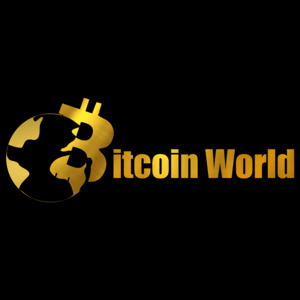Unlocking Euro Surge: ECB’s Bold Move with Lower Interest Rates
6 min read
In the ever-volatile world of cryptocurrency and traditional finance, understanding the movements of major global currencies like the Euro is crucial. Recent pronouncements from key figures at the European Central Bank (ECB) are sending ripples through the financial markets. François Villeroy de Galhau, a prominent member of the ECB’s Governing Council and Governor of the Banque de France, has made a compelling case for lowering interest rates to invigorate the Eurozone economy and, consequently, provide a significant euro boost . But what does this mean for the Euro, and how might it affect the broader financial landscape, including the cryptocurrency market? Let’s dive into the details. Understanding ECB Interest Rates and Their Significance To grasp the potential impact of Villeroy’s call, it’s essential to first understand what ECB interest rates are and why they matter. The ECB, as the central bank for the Eurozone, sets key interest rates that influence borrowing costs across the region. These rates are primary tools used to manage inflation and stimulate economic growth. Here’s a breakdown: Main Refinancing Operations Rate: This is the rate at which commercial banks can borrow funds from the ECB on a weekly basis. It’s a key benchmark for short-term interest rates in the Eurozone. Marginal Lending Facility Rate: This is the rate at which banks can borrow overnight from the ECB. It usually acts as a ceiling for the overnight market interest rate. Deposit Facility Rate: This is the rate banks receive for depositing funds with the ECB overnight. It effectively sets a floor for short-term interest rates. Changes in these ECB interest rates have a cascading effect throughout the economy. Lowering rates generally makes borrowing cheaper for businesses and consumers, encouraging investment and spending. Conversely, raising rates aims to cool down an overheating economy and combat inflation by making borrowing more expensive. Villeroy’s Vision: Lower Interest Rates for a Stronger Euro Boost Villeroy’s recent statements advocate for a strategic reduction in these key ECB interest rates . His rationale centers on the idea that lower rates, while seemingly counterintuitive to strengthening a currency, can actually provide a significant euro boost under specific economic conditions. But how can lowering rates, which typically weakens a currency in theory, lead to a stronger Euro? This is where the nuances of economic policy come into play. Villeroy argues that the Eurozone economy needs a further push to achieve its growth potential. He believes that by making borrowing more attractive, lower rates can stimulate business investment, increase consumer spending, and ultimately lead to stronger economic activity across the Eurozone. This increased economic dynamism, in turn, can enhance the attractiveness of the Euro to international investors, leading to a stronger euro boost in the long run. The Mechanics of a Euro Boost: How Lower Rates Can Strengthen the Euro The relationship between interest rates and currency value isn’t always straightforward. While higher interest rates generally attract foreign investment, boosting demand for a currency, in certain scenarios, lower rates can also contribute to currency strength. Here’s how Villeroy’s strategy for a euro boost might work: Stimulating Economic Growth: Lower rates are designed to fuel economic expansion within the Eurozone. If successful, this growth can make the Eurozone a more attractive investment destination. Increased Investment Flows: Stronger economic growth can attract foreign capital seeking higher returns. This increased demand for Euro-denominated assets can push the euro exchange rate higher. Improved Investor Sentiment: Proactive measures by the ECB to stimulate the economy can boost investor confidence in the Eurozone’s future prospects, further supporting the Euro. Competitive Advantage: In some sectors, lower borrowing costs can enhance the competitiveness of Eurozone businesses, leading to increased exports and a stronger trade balance, which is positive for the euro exchange rate . However, it’s crucial to acknowledge that this strategy is not without risks. Lower interest rates can also lead to: Inflationary Pressures: Excessive stimulus can lead to inflation, which erodes the purchasing power of the Euro and can ultimately weaken it if not managed carefully. Currency Devaluation (Short-Term): Initially, lower rates might lead to a temporary weakening of the Euro as investors anticipate lower returns on Euro-denominated assets. Dependence on Continued Stimulus: Economies can become overly reliant on low interest rates, making it difficult to normalize monetary policy in the future. Navigating the Euro Exchange Rate: What to Expect? For those tracking the euro exchange rate , Villeroy’s comments suggest a potentially complex period ahead. In the short term, the market reaction might be mixed. Some investors might anticipate the intended euro boost from economic stimulus and buy Euros, while others might focus on the immediate impact of lower rates and sell, expecting a weaker currency. Here’s a possible scenario breakdown: Scenario Short-Term Euro Exchange Rate Impact Long-Term Euro Exchange Rate Impact Market anticipates successful economic stimulus Potential slight initial dip, followed by stabilization or modest increase Likely appreciation due to stronger economic fundamentals Market focuses on immediate rate cut impact and inflation fears Potential initial dip, possibly more pronounced Uncertain, depends on ECB’s inflation management and economic growth outcomes Mixed market reaction, uncertainty prevails Volatile euro exchange rate with no clear direction Direction depends on evolving economic data and ECB communication Traders and investors should closely monitor ECB communications, Eurozone economic data releases (like GDP growth, inflation figures, and unemployment rates), and global risk sentiment to gauge the likely trajectory of the euro exchange rate . The success of Villeroy’s strategy hinges on the ECB’s ability to effectively stimulate growth without triggering runaway inflation. Euro Outlook: Opportunities and Challenges Ahead The euro outlook is now intricately linked to the ECB’s forthcoming decisions on interest rates and the broader economic performance of the Eurozone. Villeroy’s call for lower rates signals a proactive stance from a key ECB policymaker, indicating a potential shift towards further monetary easing to support growth. This presents both opportunities and challenges. Opportunities: Potential for Euro Appreciation: If lower rates successfully spur economic growth, the Euro could experience significant appreciation in the medium to long term. Investment Opportunities in Eurozone Assets: A stronger Eurozone economy could create attractive investment opportunities in Euro-denominated stocks, bonds, and real estate. Boost for Eurozone Businesses: Lower borrowing costs can improve profitability and expansion prospects for businesses operating within the Eurozone. Challenges: Inflation Risks: The primary challenge is managing inflation. If lower rates lead to uncontrolled price increases, it could undermine the Euro’s strength and erode consumer purchasing power. Global Economic Uncertainty: The global economic landscape remains uncertain, with factors like geopolitical tensions and supply chain disruptions potentially impacting the Eurozone’s growth prospects. ECB Communication and Credibility: The ECB needs to communicate its strategy clearly and maintain credibility to ensure market confidence in its ability to navigate these challenges. Actionable Insights: Navigating the Euro in a Low-Rate Environment For cryptocurrency investors and those involved in Forex trading, understanding the potential implications of lower interest rates euro and the resulting euro boost (or lack thereof) is crucial. Here are some actionable insights: Monitor ECB Announcements: Stay informed about upcoming ECB meetings and policy announcements, paying close attention to any signals regarding interest rate adjustments. Track Eurozone Economic Data: Keep an eye on key economic indicators like GDP growth, inflation, unemployment, and consumer confidence for the Eurozone. Analyze Global Market Sentiment: Consider how global risk appetite and overall market sentiment are influencing currency flows and the euro exchange rate . Diversify Your Portfolio: In a volatile environment, diversification across different asset classes, including cryptocurrencies and traditional currencies, can help mitigate risk. Consider Forex Trading Strategies: Explore Forex trading strategies that capitalize on potential Euro fluctuations, but always manage risk carefully. Conclusion: A Bold Move for the Euro’s Future Villeroy’s call for lower interest rates euro is a bold move aimed at injecting vitality into the Eurozone economy and ultimately achieving a sustainable euro boost . Whether this strategy will succeed depends on a complex interplay of economic factors, ECB policy execution, and global market conditions. For those watching the cryptocurrency and Forex markets, the Euro’s trajectory in the coming months promises to be both fascinating and potentially rewarding, demanding close attention and informed decision-making. The ECB’s actions will undoubtedly shape the euro outlook and have reverberations across the global financial landscape. To learn more about the latest Forex market trends, explore our article on key developments shaping currency exchange rates and global economic policies.

Source: Bitcoin World


